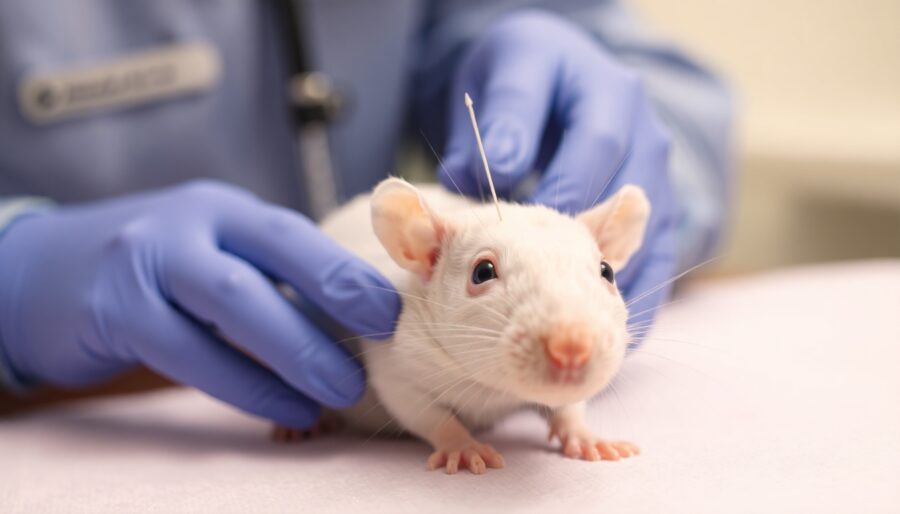Acupuncture, a cornerstone of traditional Chinese medicine, has garnered attention in various fields, including veterinary medicine. Research focusing on its application in treating ischemic strokes has provided valuable insights that can benefit veterinarians interested in integrative therapies. This blog explores a study utilizing the Sprague Dawley rat model to assess acupuncture’s efficacy in stroke recovery.
Understanding the Study Design
In this study, researchers employed the middle cerebral artery occlusion (MCAO) method to induce focal cerebral ischemia in Sprague Dawley rats. This model mimics human ischemic stroke conditions, allowing for the observation of treatment effects in a controlled environment. The rats were divided into three groups: a real acupuncture group (n = 63), a sham acupoint treatment group (n = 62), and a blank control group (n = 30). The use of multiple groups enabled a comprehensive evaluation of acupuncture’s effectiveness compared to other treatments.
Imaging Techniques for Assessing Injury Volume
To measure intervention effects, researchers conducted 3-D fluorodeoxyglucose-microPET imaging at three key points: baseline, post-MCAO, and after treatment. This imaging technique provided insights into the brain’s metabolic activity. It allowed researchers to quantify changes in injury volume in the rats’ right hemisphere. These precise measurements are crucial for understanding acupuncture’s therapeutic potential in stroke recovery.
Acupuncture’s Effects on Injury Volume
The results indicated that real acupuncture significantly reduced the injury volume compared to the other groups. In contrast, the sham acupoint treatment led to an increase in injury volume, while the blank control group showed no significant changes. These findings highlight the potential of acupuncture as a therapeutic modality in enhancing recovery following ischemic strokes, suggesting that its effects extend beyond mere placebo responses.
Statistical Validation of Findings
Further statistical analysis confirmed that acupuncture was more effective than random stimulation in promoting metabolic recovery post-stroke. This evidence solidifies the argument for incorporating acupuncture into treatment protocols for ischemic stroke, not only in human medicine but also in veterinary practice. Understanding the mechanisms behind acupuncture’s efficacy could lead to more effective treatments for pets suffering from similar conditions.
Conclusion: Integrating Acupuncture into Veterinary Practice
As the veterinary field embraces integrative medicine, acupuncture shows promise for recovery in animals with ischemic strokes. This study’s findings provide a solid foundation for veterinarians. They can explore acupuncture as a viable treatment option. Understanding its effects and mechanisms can help practitioners support patient recovery. This knowledge may improve outcomes in vascular emergencies.







